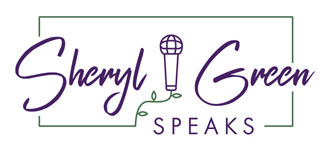You are going to write a book. You are putting your time, energy, and genius into a legacy. Hooray!
How will you share your brilliance with the world?
Awww man. I just decided to write it. Can’t I finish the book before I have to make another decision?
Well, you could. But isn’t it better to know where you’re going so you can figure out how to get there? Each route has different steps to take and there are benefits and drawbacks to every type of publishing. The method you choose will depend a lot on your motives and your time frame. Read on to find out which type of publishing is best for you.
Traditional Publishing
Through years of mergers, bankruptcies, and natural attrition, we are down to 5 major publishing houses in the U.S.. They include: Hackette Book Group, HarperCollins, Macmillan Publishers, Penguin Random House (that’s a relatively new marriage), and Simon and Schuster.
Publishing through one of these houses involves querying agents who once they agree to work with you, will then approach publishers on your behalf. The querying process is a whole other beast that I’ll tackle in a future post.

Dinosaurs like to write too.
Major Pros:
- Potentially better distribution (you may make it into a brick and mortar stores).
- Street Cred baby! You get to say you are a traditionally published author (feel free to develop your own gang sign.)
Major Cons:
- Challenging to land an agent.
- Even more challenging to catch the eye of a publisher.
- Turnaround time will likely exceed a year.
- You lose a lot of the control over your work.
- You make less money off of each book. The publisher has taken an upfront-risk on you, shelling out the cash to edit your book, create a cover design, print, market, etc.. They hope (hope) to recoup that money, so you’ll see less of the proceeds per copy.
If you decide to go this route, make sure that you trust your agent and read all of your contracts carefully. The publisher is not looking out for your best interest, but theirs.
Self/ Indie Publishing
Yes, there is still a stigma regarding self publishing, but just like online dating, it’s decreasing every day. “Indie” is a new term that helps to differentiate between the self published author who treats writing and publishing as a business, and the hobbyist who wanted to regale their grandchildren with stories of the “good ol’ days.”
Major Pros:
- You retain all the creative power and have the freedom to disregard suggested edits.
- You’ll spend money up front, but reap more of the rewards come sale time.
- Turnaround can be just a few days.
- You no longer have to order thousands and thousands of books. Two of the most popular publishing platforms are createspace and IngramSpark. They are fairly user friendly, and print-on-demand so you can order small shipments of books whenever you need them.
- Digital editions can be published easily and quickly through Amazon’s Kindle.

“Help! I can’t park in my garage.”
Major Cons:
- You may not be taken as seriously as someone with a traditionally published book.
- More responsibility falls on you.
- There is a financial outlay.
- Many authors do not have their book edited, formatted properly, or a quality cover designed. This makes them look unprofessional.
No matter which method you choose, realize that the brunt of the marketing will fall on you. While a traditional publisher may open some doors that you can’t open on your own, their marketing money goes behind the big name authors, not the newbies.
There are several authors out there who have used both methods of publishing, choosing whichever works better for their current project. The publishing decision can be a challenging one to make, however figuring out your reason for writing the book and your desired outcomes, will make the decision easier. For more information about the writing process, download my e-book here.



Recent Comments